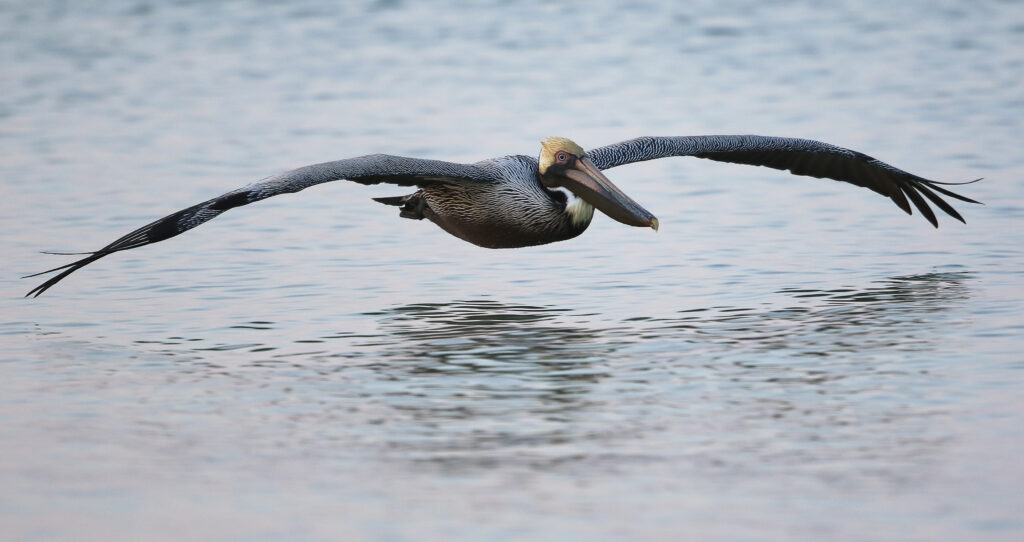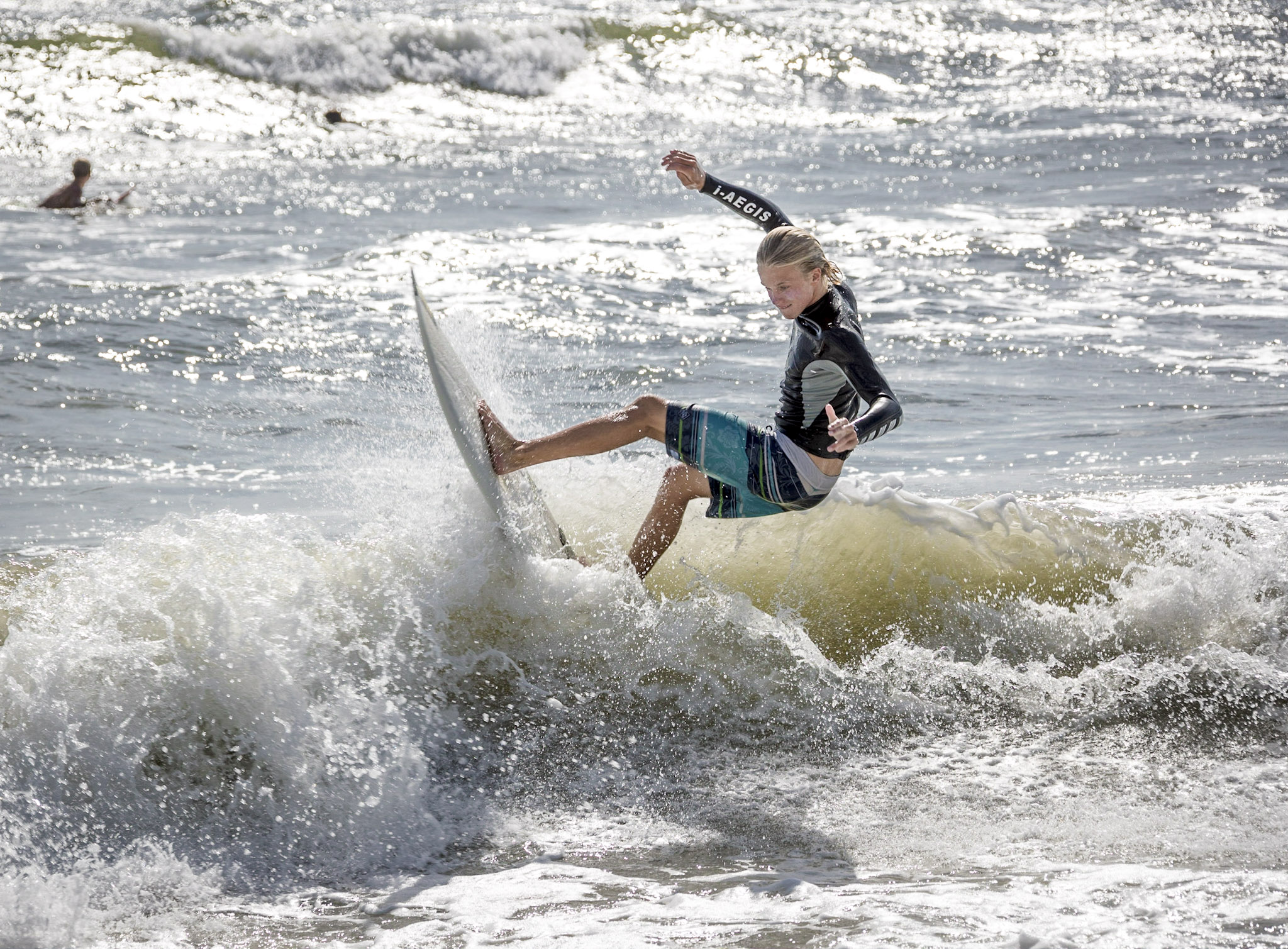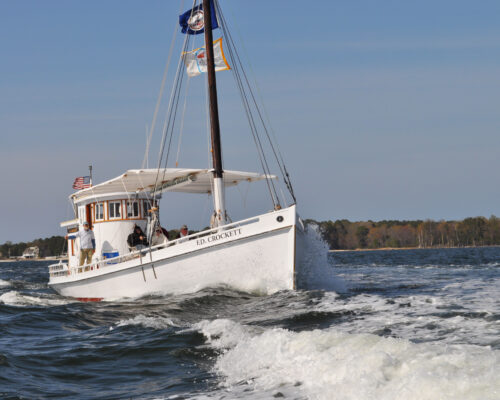Bay islands may no longer be an ideal place for humans to reside, but a certain species of bird has declared them to be the perfect nesting sites.
Before 1990, pelicans were rarely seen on the Chesapeake Bay. Now these odd large birds regularly set up house on several islands in the southeast portion of the Bay. This is the northernmost nesting area for the brown pelican.
A July 2022 story by Andrea Sachs in the Washington Post states that Captain John Smith made no mention of these odd large birds during his 1608 exploration of the Bay nor are there any records of the Chesapeake’s indigenous people encountering pelicans. Sachs notes that no pelicans nested north of Virginia until 1987 when two pairs were found on southern Assateague Island. Since then, while most shorebirds are declining in numbers, brown pelican numbers increased. Last year there were approximately 2500 nesting pairs of brown pelicans in the lower Bay.
It’s such an extraordinary sight that boat tours of the shallow waters around Smith Island, Maryland, have popped up to ferry birders out to see the pelican nests
The Delmarva Birding Weekends tours bundle a ferry ride to Smith Island, with lunch (including the famous Smith Island cake), a history tour, a birding walk and a skiff tour of the nesting pelicans. Tour times depend on the tides—a trip to the brown pelican rookeries needs to take place during high tide.
Jim Rapp began offering the tours in 1995. Initially, it was just to see the pelicans but now the trips include more stops and help support the income of Smith Island residents. The tours are an 8-hour day of adventuring in the unique area. But the birding part of the tour remains the main draw.
On a recent June trip, guests spotted 37 species of birds, including the elusive seaside sparrow, glossy ibis, white ibis and a family of black ducks. The time spent in the skiff is about 90 minutes and the boat moves occasionally to reduce any stress on the nesting birds. Guests remain in the boat—Rapp reports that he has not seen any evidence of the pelicans being harassed by inconsiderate boaters. (When visiting any nesting birds, it is very important not to stress them. A chick that escapes the nest due to your presence may not return. Signs of stress in birds are sudden panting, moving aimlessly and frequent panicky noises.)
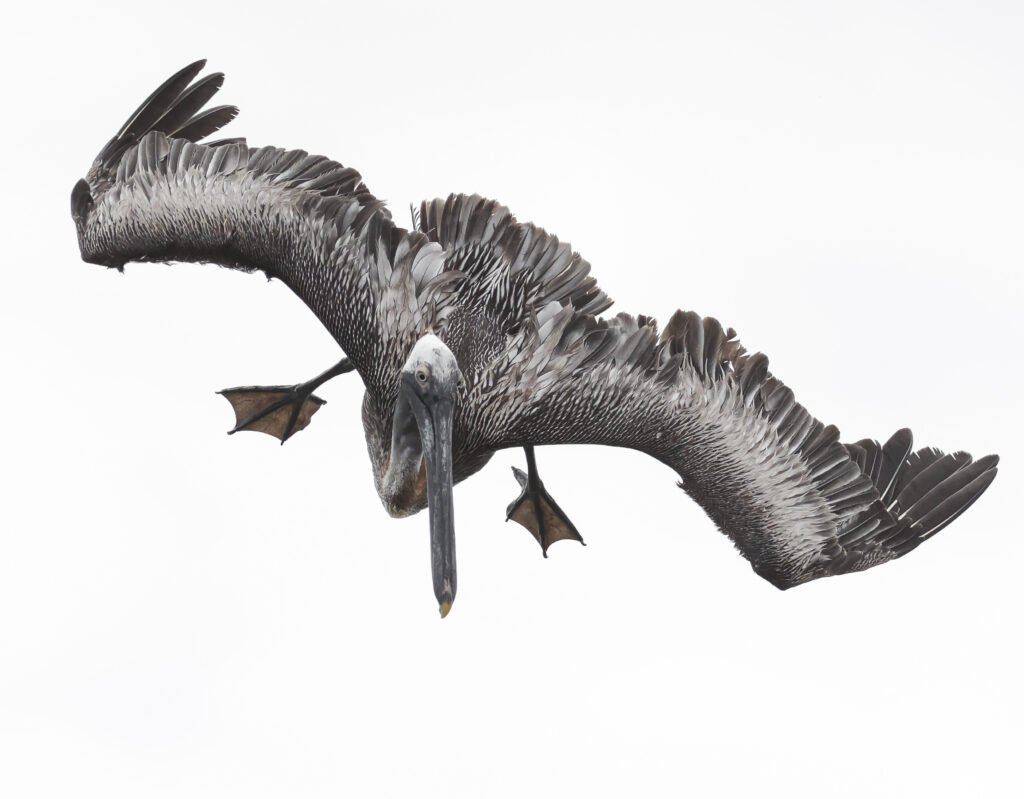
Rapp’s company, Delmarva Birding Weekends, offers several trips around the region. One is along the Harriet Tubman Byway, a Blackwater trip and another along the Delaware Bay at Lewes. The Harriet Tubman tour has chances for some excellent birding and doubles as a historical tour. The Blackwater tour focuses on the unique animals at the National Wildlife Refuge. The Lewes tours are cold weather events that take guests out to look for seals and rare wintering waterbirds.
The Eastern Brown Pelican (Pelecanus occidentalis) is the smallest of the nine pelican species and one of the two species that dive into the water to catch fish. They live 20 to 30 years and begin sexual maturity at age 3.
The Smith Island pelicans are an environmental success story. In 1973, brown pelicans were considered nearly extinct after decades of use of the pesticide DDT. The chemical was banned in 1972 when it was determined that it was accumulating in the tissues of fish and weakening the eggshells of fish-eating birds like osprey, eagles, and pelicans. The pesticide had caused a population collapse in all the species of birds that were exposed to it. As DDT slowly disappeared from the environment, brown pelican populations rebounded.
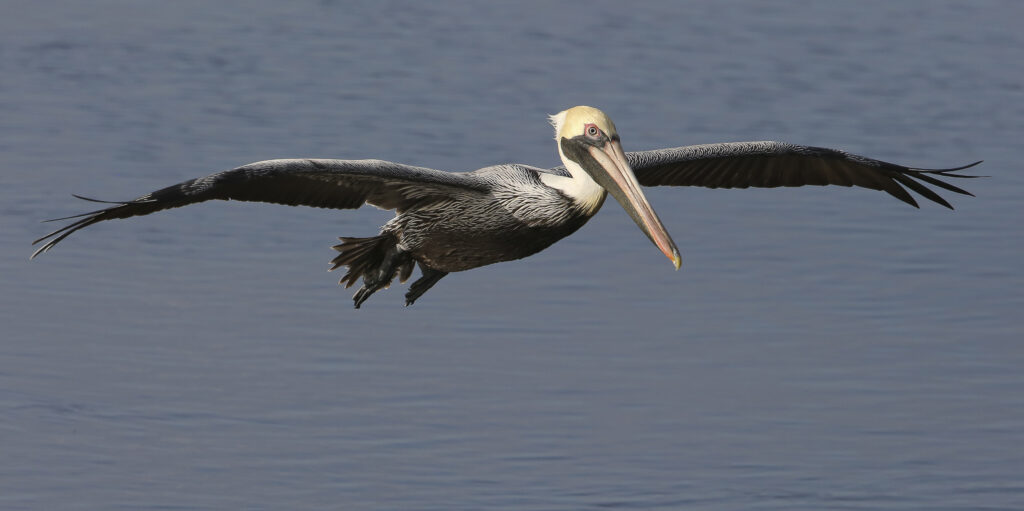
In 2009, brown pelicans were removed from the endangered species list. Their nesting habits have helped their survival. Pelicans prefer to nest on small islands that have few predators. They make nests on either sand, grasses or small trees and so they were able to use the islands of the Intracoastal Waterway to increase the population. As shoreline construction began causing a decline in many shorebird species, the pelican population increased and moved north. Spring storms were proposed to have pushed several pelican couples from the Outer Banks of North Carolina onto the islands of Chesapeake Bay.
The brown pelican is one of the most interesting of the Atlantic coast seabirds. They can be seen near the coastlines elegantly gliding in the troughs of the waves. Pelicans seem to feel the physics of the lift caused by the waves. Pelicans are also seen flying high over the water in the shape of a “V” until they spot a school of small fish and then drop at 40 miles per hour into the group of unsuspecting fish. While underwater, the pouches under their bills enlarge with almost three gallons of water as they scoop up as much of the startled fish as they can. The water drains as they raise the bill out of the water and the fish are swallowed when their bill tilts up over their head.
Some of the Bay islands that the brown pelicans seem to prefer are Drum Point, Holland, Adam and Shanks. The islands are far enough from shore that predatory raccoons can’t reach them and close to productive feeding grounds.
Without predators around, the pelicans can build a nest on the ground. The pelican nests are generally little more than a scooped-out area of grass with more grass, sticks and dry seaweed forming a bowl. More sticks are used if they are nesting in a tree. In trees, they prefer easy nest sites with horizontal branches and a good landing area.
While the pelican’s large webbed feet make them very awkward at landing in trees and walking, they make them excellent swimmers. Their large feet are also good for incubation. After a nest is made, the female will lay two eggs and both parents will take turns incubating the eggs under the webbing of their feet. The young hatch in about 30 days. Initially, the young are fed by partially digested fish that the parent regurgitates on the edge of the nest. Because of this feeding method, pelican nesting sites are pretty smelly. After a month, the nestlings are fed whole fish. In around 75 days, the young are ready to fly. By fall, they will spread their 6-foot wingspan to find warmer waters, following the migrating alewives and mullet to South Carolina, Georgia and Florida.
Smith Island pelican tours continue through July but do fill up fast: https://delmarvabirding.com.

